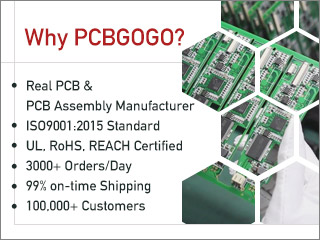The Ultimate Guide to Avoiding Reflow Soldering Pitfalls
Introduction:
Soldering defects in the SMT (Surface Mount Technology) process can critically impact product performance and reliability. These defects fall into three categories: major, minor, and cosmetic. Major defects severely compromise functionality and must be repaired or replaced. Minor defects might not cause immediate failure but shorten product lifespan and require tight process control. Cosmetic defects don’t affect performance but degrade appearance and perceived quality. To ensure high-quality SMT assemblies, a well-controlled surface mount process is essential.
1. Solder Balls in Reflow Soldering
Causes:
Solder balls form when solder paste placed between component leads and pads fails to coalesce properly during reflow. Poor wetting between the paste, PCB pads, and component leads causes molten solder to shrink unevenly and migrate, forming isolated balls rather than a unified joint. Fundamentally, the root cause is insufficient wetting.
Solutions:
Temperature Profile Control:
Inadequate peak temperature or insufficient reflow time can prevent full solder paste reflow. Rapid heating in the preheat zone may not allow solvents to evaporate fully, leading to solder splatter. An ideal ramp rate is 1–4°C/sec.
Stencil Design:
Poor stencil aperture definition, especially with fine-pitch components, can result in excess solder and bridging. Choose high-precision stencils and appropriate aperture designs to ensure clean paste deposition.
Solder Paste Shelf Life:
Prolonged intervals between paste application and reflow can cause oxidation, reducing paste activity. Use long-life pastes (minimum 4 hours) to mitigate this issue.
PCB Cleanliness & Print Accuracy:
Ensure PCBs are clean before reflow. Misalignment and paste residue can result in defects. Operators must strictly follow printing and alignment protocols.
2. Tombstoning (Manhattan Effect)
Tombstoning occurs when one end of a chip component lifts during reflow, often due to thermal imbalance.
Primary Causes:
Uneven Heating:
In reflow ovens, if one end of the component crosses the reflow threshold first (typically ~183°C), it melts before the other side, creating surface tension that lifts the unmolten side.
Improper Preheating (Vapor Phase Soldering):
Inadequate preheating causes one end to heat faster. Preheating the assembly to 145–150°C for 1–2 minutes before vapor phase soldering can help balance temperatures.
Pad Design Issues:
Asymmetric or oversized pads can cause uneven paste volumes and heat absorption. Always follow IPC standards for pad layout to ensure thermal and mechanical balance.
3. Bridging in Fine-Pitch Components
Solder bridging between fine-pitch leads is a critical defect often caused by design and process mismatches.
Contributing Factors:
Solder Paste Quality:
Inconsistent viscosity or metal content can increase the risk of bridging. Use high-quality solder pastes and ensure proper storage.
Printing and Placement Issues:
Misaligned prints or excessive paste volume may cause shorts. Proper Z-axis control and placement pressure are essential.
Reflow Profile:
Rapid heating can exacerbate bridging. Use a controlled ramp-up and soak period in the temperature profile.
4. Other Reflow Soldering Defects and Countermeasures
1. Blowholes & Pinholes
Cause: Rapid solvent or moisture evaporation.
Fix: Adjust preheat to allow solvent evaporation; increase solder paste viscosity and metal content.
2. Voids
Cause: Trapped gas during solidification reduces joint strength.
Fix: Improve outgassing by preheating and increasing paste viscosity.
3. Component Misalignment
Cause: Uneven paste thickness, inaccurate placement, or thermal imbalance.
Fix: Enhance placement accuracy, optimize thermal profile, and use consistent pad sizes.
4. Insufficient Solder (Solder Starvation)
Cause: Poor wetting or low paste volume.
Fix: Improve solderability of pads/components, boost flux activity.
5. Dull or Grainy Joints
Cause: Contamination or improper cooling.
Fix: Prevent vibration during cooling, accelerate cool-down phase.
6. Non-Wetting
Cause: Low component/pad solderability, weak flux, or inadequate heat.
Fix: Raise reflow temperature, use more active fluxes.
7. Cold Solder / Open Joints
Cause: Poor coplanarity or large thermal mass differences between pad and lead.
Fix: Improve coplanarity, increase paste thickness, balance heat transfer, or adjust alloy composition for delayed melting (e.g., using Sn10Pb90 instead of Sn63Pb37).
Conclusion:
Reflow soldering, though just one step in the SMT process, has a decisive impact on final product quality. Understanding common failure modes, optimizing temperature profiles, selecting high-performance solder pastes, and maintaining strict process discipline are key to achieving defect-free solder joints. At PCBGOGO, we combine expert knowledge with cutting-edge SMT and reflow soldering equipment to deliver reliable, high-quality assembly solutions. Let us be your trusted partner in electronic manufacturing.


